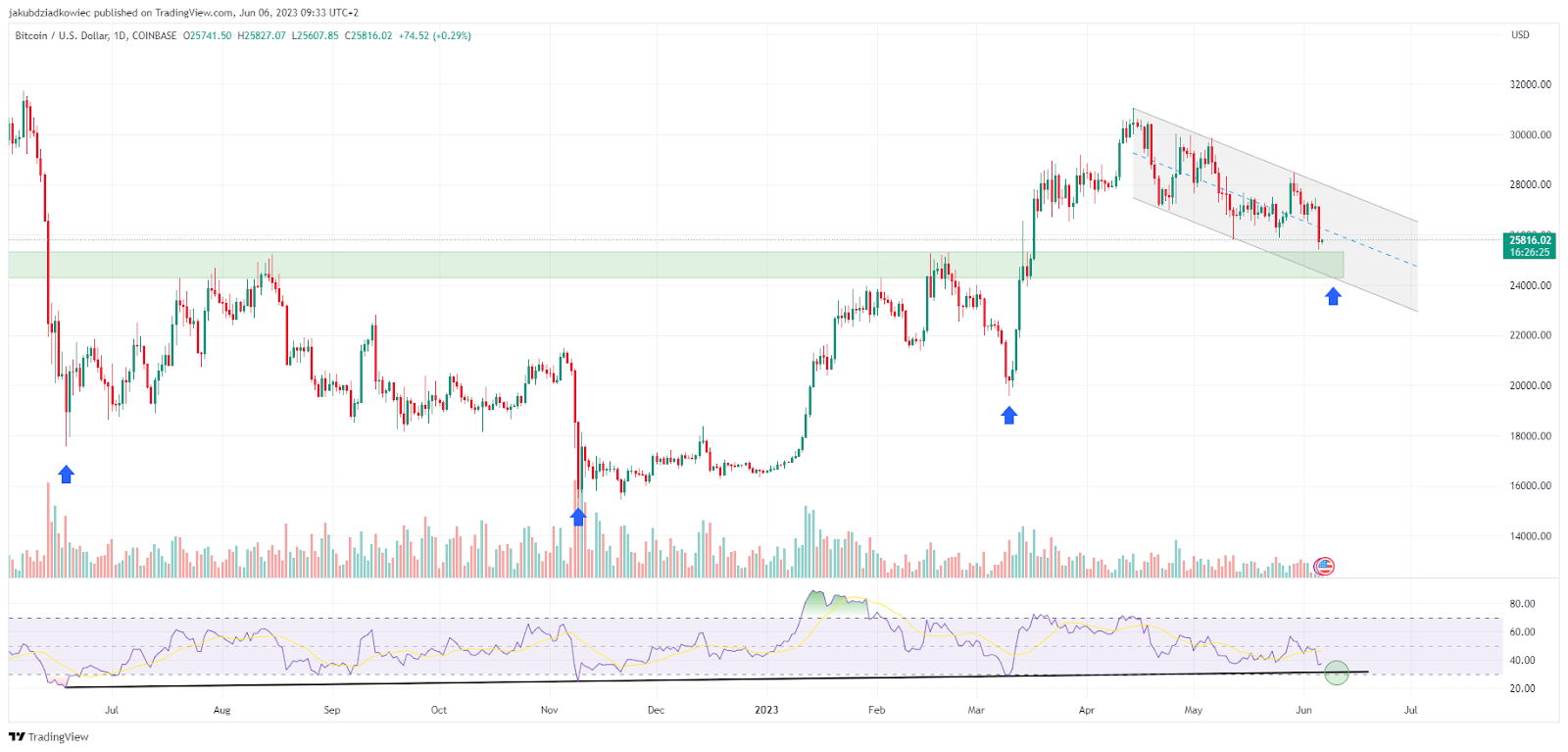The cryptocurrency market crash triggered by the SEC’s lawsuit against Binance caused a sharp drop in the Bitcoin (BTC) price. The largest cryptocurrency by market capitalization lost more than 5% yesterday and is approaching the long-term support area at $25,000.
If Bitcoin holds this support level, it could initiate a bounce to a new one-year high. However, if it is lost, the coming weeks could bring a deeper correction in the broad cryptocurrency market.
SponsoredBitcoin reaches long-term support
The weekly chart shows that the Bitcoin price is currently recording its lowest levels since mid-March 2023. However, it still sits above the long-term support area (green), which has repeatedly served as support and resistance (blue arrows).
There is a chance that an S/R flip will take place now as well, with the $24,000 – $25,000 range acting as support.
Moreover, this area corresponds with the 0.382 Fib retracement level measured for the entire upward move since the beginning of this year. Standard market corrections often reach this area, only to later resume the movement in line with the market trend.
The principle behind Fibonacci retracement levels suggests that after a significant price move in one direction, the price retreats or partially returns to the previous level. It then continues the movement in the original direction.

Another argument for the possibility of a potential bounce was provided by well-known analyst @ITC_Crypto. He pointed out that the Bitcoin price has returned to the so-called bull market support band.
SponsoredIt is formed by the 20W SMA (currently at $26,210) and the 21W EMA (at $25,850).
More From BeInCrypto:
Historically, holding the levels set by it was a sign of a healthy uptrend. However, when this band was lost, it turned into a difficult to surpass long-term resistance level.

BTC price prediction: Will the RSI hold the yearly line?
The daily chart of the Bitcoin price provides mixed signals. First of all, the BTC price has lost the median of the descending parallel channel, which has been in place since mid-April.
Usually, such an event leads to a movement toward the lower edge of the channel. This one is currently located at $24,400 and remains in confluence with the horizontal area of long-term support.
A descending parallel channel is considered a corrective pattern, so it usually leads to a breakout. However, for this to occur, Bitcoin must hold support levels.

Then the Relative Strength Index (RSI) is below the 50 level and declines. Using the RSI as a momentum indicator, investors can determine whether the market is overbought or oversold.
In addition, they decide whether to accumulate or sell assets. If the RSI reading exceeds 50 and the trend is upward, the bulls have the advantage. The opposite is true when the reading is below 50.
However, the daily chart of the RSI seems to be following the ascending support line (black), which goes back to June 2022. So far, touches of this line have marked market lows and led to a strong bounce in the Bitcoin price (blue arrows).
If this happens this time as well, the aforementioned support levels are likely to initiate a bounce. If, on the other hand, both the RSI line and horizontal support are lost, BTC could continue its decline to the next important area at $21,500.
Read More:
For BeInCrypto’s latest crypto market analysis, click here.

